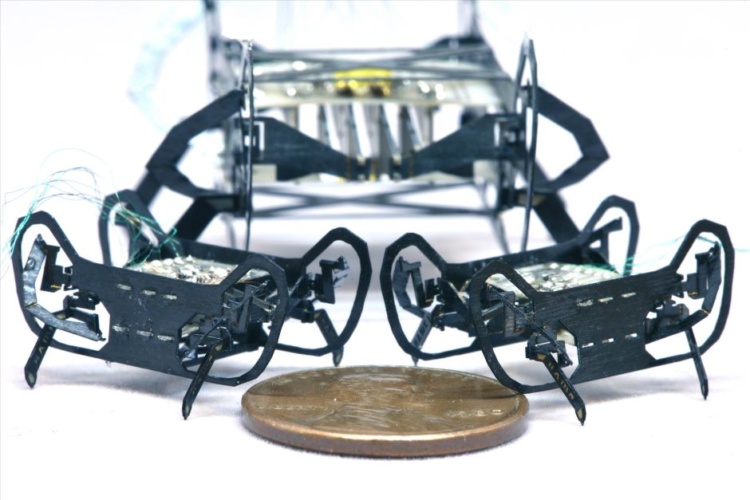Developed by researchers at the Harvard John A. Paulson School of Engineering and Applied Sciences (SEAS) and the Harvard Wyss Institute for Biologically Inspired Engineering, HAMR-JR is a half-scale version of HAMR (Harvard Ambulatory Microrobot).
Robotic cockroach walks on – and beneath – water
Harvard engineers demonstrate resilient robot bee
About the size of one cent coin, HAMR-JR can perform almost all the feats of HAMR, making it one of the most dexterous microrobots to date.
“Most robots at this scale are pretty simple and only demonstrate basic mobility,” said Kaushik Jayaram, a former postdoctoral fellow at SEAS and Wyss and first author of the paper. “We have shown that you don’t have to compromise dexterity or control for size.”
The research was presented virtually at the International Conference on Robotics and Automation (ICRA 2020) this week.

According to the team, a key question going into this research was whether or not the pop-up manufacturing process used to build previous versions of HAMR and other microbots, including the RoboBee, could be used to build robots at multiple scales - from tiny surgical bots to large-scale industrial robots.
PC-MEMS (printed circuit microelectromechanical systems) is a fabrication process in which the robot’s components are etched into a 2D sheet and popped out in its 3D structure. To build HAMR-JR, the researchers shrunk the 2D sheet design of the robot - along with the actuators and onboard circuitry - to recreate a smaller robot with all the same functionalities.

“The wonderful part about this exercise is that we did not have to change anything about the previous design,” Jayaram said in a statement. “We proved that this process can be applied to basically any device at a variety of sizes.”
HAMR-JR is 2.25cm long and weighs about 0.3g. It can run about 14 body lengths per second, making it one of the smallest and fastest microrobots.
The team said that scaling down does change some of the principles of elements such as stride length and joint stiffness, so they developed a model that can predict locomotion metrics like running speeds, foot forces, and payload based on a target size. The model can then be used to design a system with the required specifications.





Nanogenerator consumes CO2 to generate electricity
Nice to see my my views being backed up by no less a figure than Sabine Hossenfelder https://youtu.be/QoJzs4fA4fo